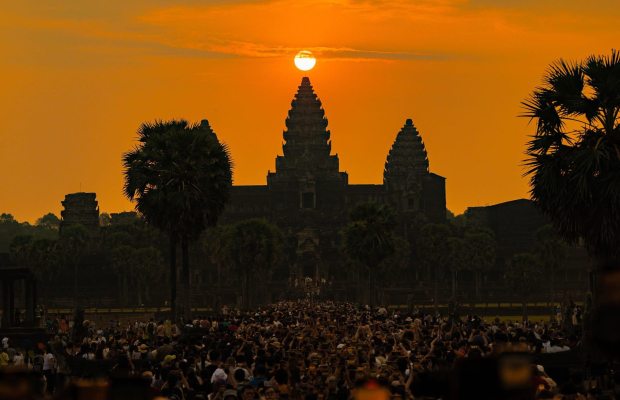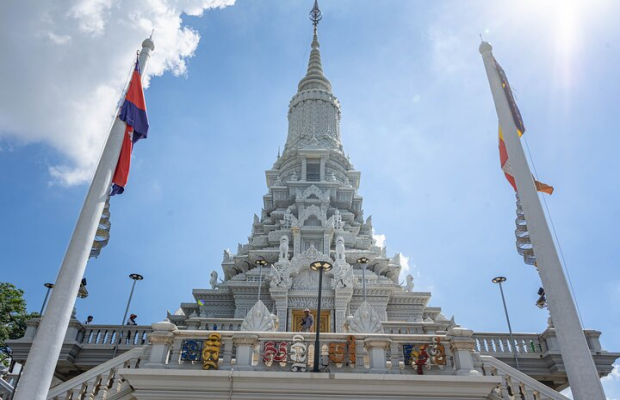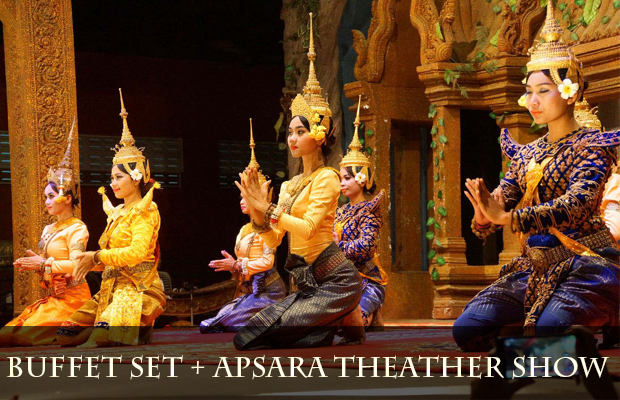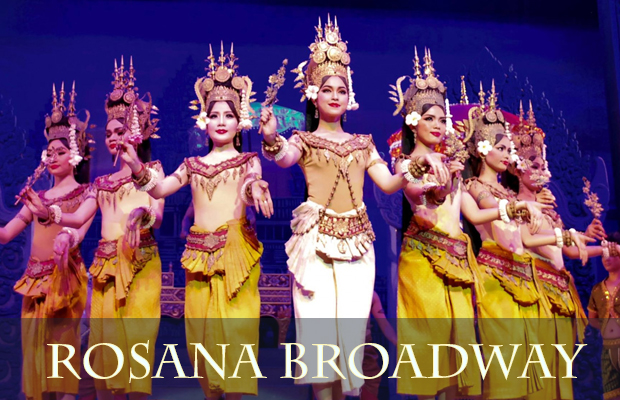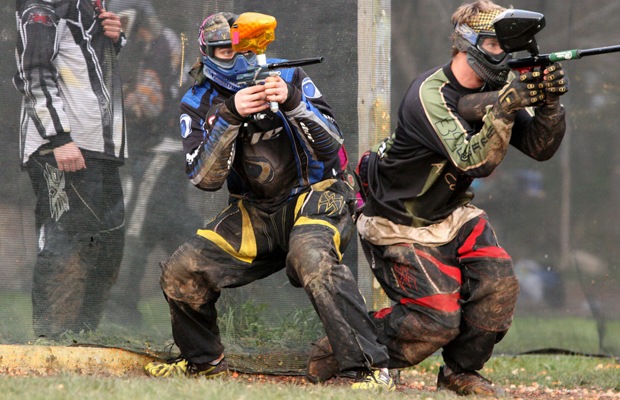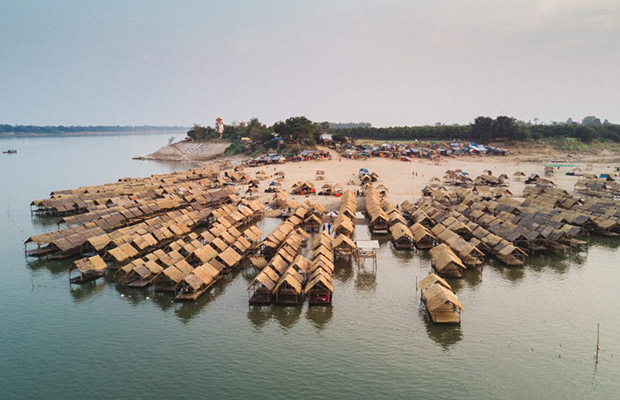Explore
Phnom Penh Central Market
Overview of Phnom Penh Central Market
The Phnom Penh Central Market is housed in a colonial-style building in the heart of the Cambodian capital. Its Khmer name Psar Thmay translates as "new market", although it is more commonly referred in English as Central Market.
The Psar Thmay was built in 1937 during the French colonial period, in Art Deco style, and is painted bright ochre. It consists of four wings dominated by a central dome. Within the four wings and around the compound outside are on sale almost anything you can think of, including electronic equipment, clothing, watches, bags, suitcases, dried and fresh foodstuff, jewellery, clothes from cheap t-shirts to krama (Khmer scarves), pseudo-antique, books including photocopied travel guides and lots of souvenirs.
About Phnom Penh Central Market
The Central Market (Khmer: Psah Thom Thmey or New Grand Market), is a large market constructed in 1937 in the shape of a dome with four arms branching out into vast hallways with countless stalls of goods. It is located in Cambodia's capital city, Phnom Penh. When it first opened in 1937, it was said to be the biggest market in Asia, and today it still operates as a market. From 2009 to 2011, it underwent a US$4.2 million renovation funded by the French Development Agency.
The market opens from 7:00 AM to 5:00 PM, and it is, for tourists, a 'must see' stop. Most tourists visit this market because they want to see the extensive amount of products that are offered for bargain. The four wings of this gigantic yellow-coloured dome are teeming with numerous stalls that sell goods ranging from gold and silver, antique coins, money exchange, men's and women's apparel, clocks, books, flowers, food, fabrics, shoes, souvenirs, fish, seafood, dessert, luggage, and countless other products.
This unique Art Deco building is a Phnom Penh landmark. Prior to 1935, the area was a lake that received runoff during the rainy season. The lake was drained and the market begin its construction in 1935 and completed in 1937. Wet season flooding in the area around the market is vestigial evidence of the existence of the old lake. The entrance to the market is lined with souvenir merchants hawking everything from T-shirts and postcards to silver curios and kramas. Inside is a dazzling display of jewels and gold. Electronic goods, stationery, secondhand clothes and flowers are also in ample supply.



.jpg)
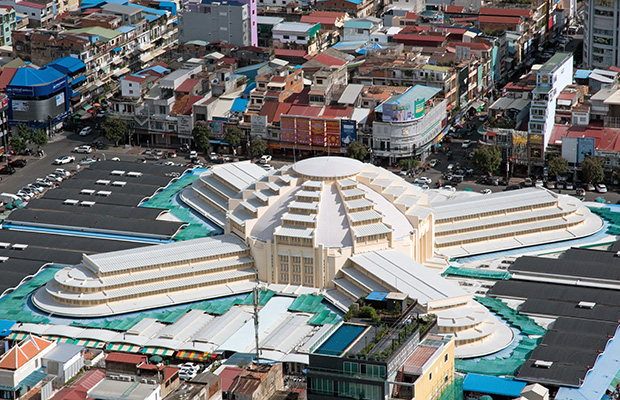

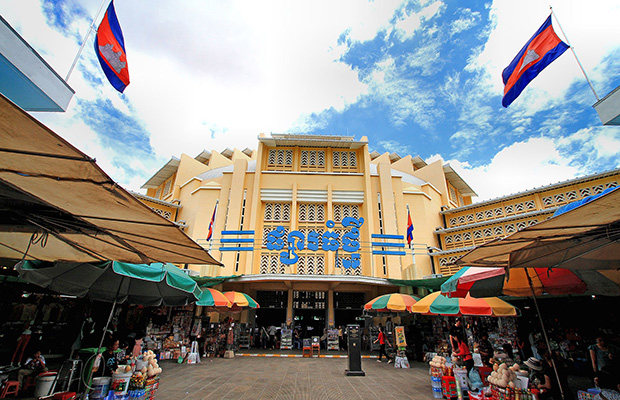

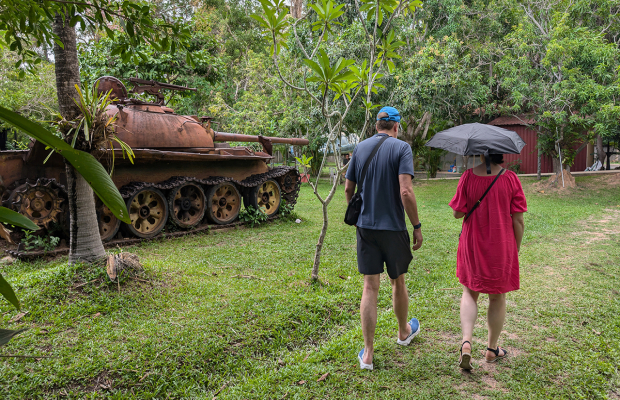
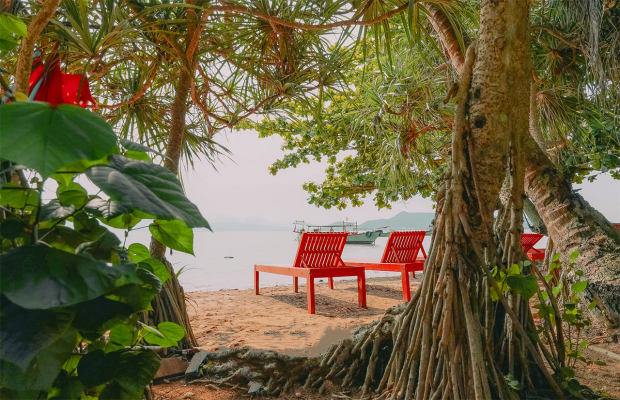
.jpg)
